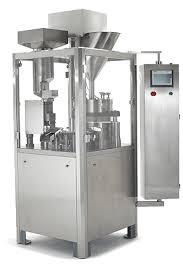Understanding the mechanics of a pill tablet press machine is essential for anyone involved in pharmaceutical manufacturing. These machines transform powder into tablets by compacting the material under high pressure, a process central to the mass production of medications. Here, we explore the inner workings of these sophisticated devices with a focus on their operation, precision, and efficiency.
Basic Operation of a Tablet Press
The core function of a pill tablet press machine involves filling, pressing, and ejecting tablets. Initially, the powdered formula is fed into the machine where it fills a die cavity. The amount of powder that fills the die determines the weight and size of the final tablet, and it's controlled meticulously to ensure consistency.
The Role of Punches and Dies
Punches and dies are critical components. A typical tablet press has upper and lower punches that fit into a die cavity. When the machine operates, these punches come together to compress the powder. The pressure applied can range from several kilotons to tens of kilotons, depending on the density and hardness required for the tablet. This process ensures that each tablet is compact enough to hold together, yet disintegrate properly when ingested.
Turret Operation – Speed and Precision
The turret is the revolving part of the machine that holds the punches and dies in place. Its rotation speed is a key factor in determining the output of the pill tablet press machine. High-speed machines can produce anywhere from 250,000 to over 1 million tablets per hour. Precision in the alignment of the turret ensures that each tablet is uniform, meeting strict industry standards for weight and thickness.
Feeding System – Consistency in Dosage
The feeding system plays a pivotal role in how a pill tablet press machine maintains consistency. It ensures that each die is filled with exactly the right amount of powder before compression. Advanced systems use vacuum or mechanical methods to remove excess powder, guaranteeing that each batch has uniform dosage levels. This consistency is critical for compliance with pharmaceutical regulations.
Automation Enhances Efficiency
Modern pill tablet presses are often equipped with automated systems that monitor and adjust the operation parameters in real-time. Sensors can detect variations in tablet weight or thickness and adjust the machine's settings accordingly. This level of automation not only boosts efficiency but also minimizes human error, leading to higher quality products.
Maintaining Optimal Performance
Regular maintenance is crucial. This includes checking mechanical parts for wear, updating software, and calibrating the system to ensure it operates within specified parameters. Such maintenance guarantees that the machine continues to function at its best, reducing downtime and increasing the longevity of the equipment.
Understanding the function and mechanics of a pill tablet press machine is key to optimizing the production of pharmaceutical tablets. These machines combine speed, precision, and efficiency to meet the high demands of the industry, ensuring that medications are produced consistently and to high standards. Maintaining these machines well is just as important as operating them correctly, ensuring they deliver peak performance day in and day out.
